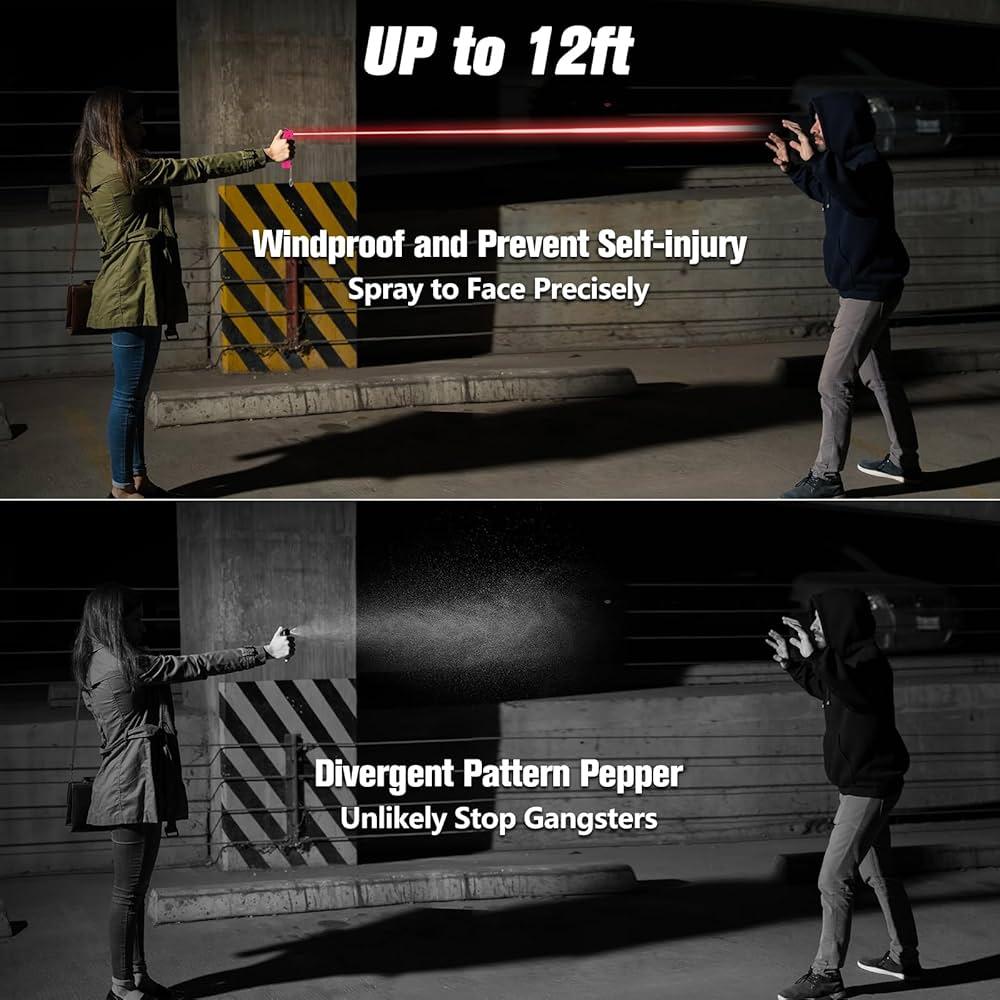Table of Contents
- Understanding the Challenges of Pepper Spray Use in Low-Light Conditions
- Choosing the Right Pepper Spray Formulation for Nighttime Encounters
- Techniques for Accurate Targeting When Visibility is Limited
- Safety Tips and Legal Considerations for After-Dark Defense Scenarios
- The Way Forward
Understanding the Challenges of Pepper Spray Use in Low-Light Conditions
Operating pepper spray in dim or dark environments introduces a unique set of challenges that can impact both the effectiveness of the defense tool and user safety. One of the primary issues is reduced target visibility, which can lead to inaccurate aim and unintended exposure. Without clear visual cues, users may struggle to identify the exact position of a threat, increasing the risk of spraying in the wrong direction or missing the attacker altogether. Additionally, in low-light conditions, users might experience disorientation caused by the sudden discharge of spray combined with limited environmental awareness, making quick, confident reactions more difficult.
Moreover, the harsh chemical effect of pepper spray can impair vision for both the assailant and the user if recoil occurs, compounding the confusion in dark settings. Key factors that users should anticipate include:
- Glare or reflection from artificial lights that may distort sightlines post-application.
- Lack of peripheral awareness making it easier for attackers to approach from blind spots.
- Environment hazards such as uneven terrain or obstacles that become harder to navigate after spray deployment.
Understanding and preparing for these challenges by practicing pepper spray use under similar lighting conditions can significantly improve response time and accuracy when it truly matters.
Choosing the Right Pepper Spray Formulation for Nighttime Encounters
When selecting a pepper spray formulation for nighttime use, visibility and response time are crucial factors to consider. Opt for formulations that include a fog or gel spray, as these tend to linger longer in the air and reduce the risk of wind blowing the spray away from your target in low-light environments. A gel-based spray offers the added advantage of sticking to the attacker’s face, preventing them from easily wiping it off and giving you more time to escape. Additionally, the color and visibility of the spray plume are important-look for sprays with a bright, visible dye marker that can help law enforcement identify the aggressor after the incident.
Another vital aspect is the balance between intensity and safety. While you want a formulation that is potent enough to incapacitate swiftly, it’s equally important to avoid overly overpowering sprays that might affect you unintentionally. Consider products with a moderate Scoville heat rating, paired with an irritant blend optimized for rapid eye and respiratory response. This ensures effective deterrence without putting you at unnecessary risk of self-exposure, especially when operating in confined or poorly ventilated areas during nighttime hours.
Techniques for Accurate Targeting When Visibility is Limited
When operating in conditions where visibility is compromised, relying solely on sight to aim your pepper spray can be risky. In these situations, training your body to use spatial awareness and muscle memory becomes invaluable. Familiarize yourself with the natural arc of your arm and the spray’s effective range to instinctively deliver accurate bursts. Additionally, positioning yourself strategically can maximize your chances of success; placing obstacles or light sources behind you may help cast subtle shadows and shapes that guide your aim without exposing you to unnecessary risk.
Another critical technique involves developing a consistent pre-attack scanning routine. Before deploying the spray, quickly identify key auditory and tactile cues that signal your target’s position-such as footsteps, breathing sounds, or clothing brushing against surfaces. If equipped with a flashlight, learn how to combine brief flashes of light with immediate spray action to minimize disorientation and maintain control. Incorporating these practices not only refines accuracy but also enhances your confidence and response time when every second counts.
- Practice drills in low-light environments to build muscle memory.
- Use auditory clues for directional awareness.
- Leverage touch to assess distance when close.
- Maintain a low, stable stance to improve spray precision.
- Integrate hand-held light tools tactically to aid targeting without prolonged exposure.
Safety Tips and Legal Considerations for After-Dark Defense Scenarios
When deploying pepper spray in dimly lit environments, situational awareness is paramount. Ensure you have a clear line of sight to your target to avoid unexpected cross-contamination or accidental exposure to bystanders. Always aim slightly downward to account for aerosol drift influenced by wind or your own movement. Carrying a flashlight can be a practical aid, not to threaten but to verify potential threats before discharging your spray. Remember, discharging pepper spray indiscriminately can escalate a situation unnecessarily or create legal ramifications.
On the legal front, understanding your jurisdiction’s regulations regarding pepper spray ownership and use is crucial. Some regions impose restrictions on the size, concentration, or permissible scenarios for deployment. Using pepper spray as a preemptive or offensive tool rather than as a last-resort defensive measure may lead to criminal charges. Always report incidents of self-defense involving pepper spray to law enforcement promptly and provide accurate details to protect your legal standing. In after-dark defense scenarios, prudence and compliance with local laws are your best allies for staying safe and protected.
The Way Forward
Mastering the effective use of pepper spray in low-light and nighttime settings is an essential skill for personal safety. By understanding the unique challenges these conditions present-such as limited visibility and reaction time-you can better prepare yourself to respond swiftly and confidently when it matters most. Remember, practice and situational awareness go hand-in-hand to ensure your pepper spray is a reliable tool in your self-defense arsenal. Stay vigilant, stay trained, and most importantly, stay safe.Check Our Other Blogs
- StunGun – Your Trusted Source for Stun Guns, Laws, and Self-Defense Tips
- PepperSprayLaws – Your Trusted Resource for Pepper Spray Information
- StunGunLaws – Your Trusted Guide to Stun Gun Legality and Safety




